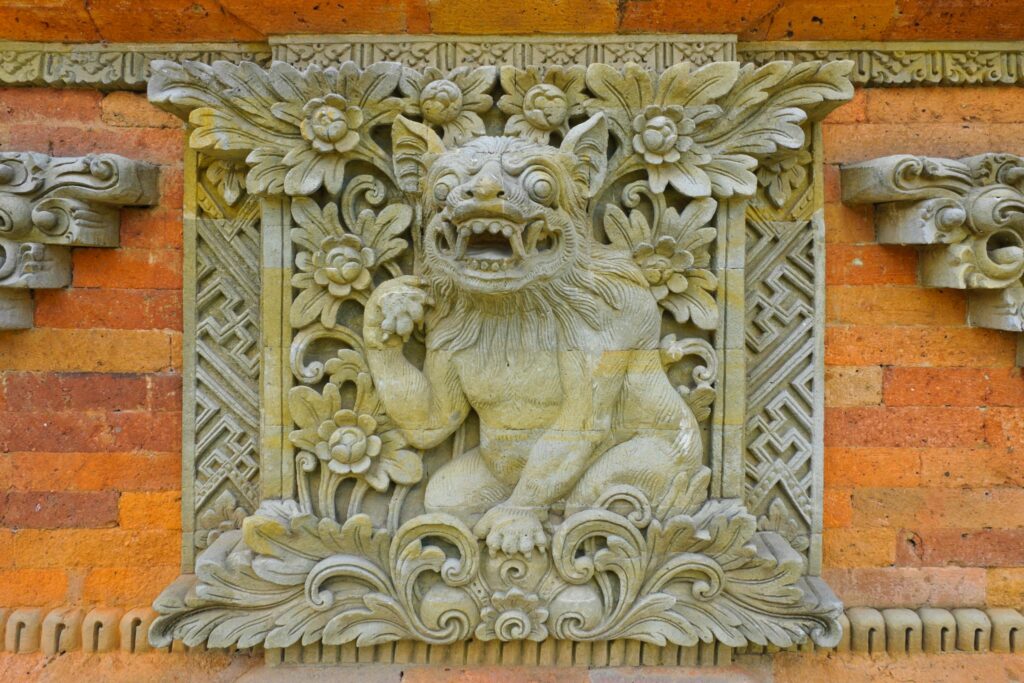Indonesia, a vast archipelago in Southeast Asia, is a country known for its rich cultural diversity, stunning landscapes, and vibrant art scene. One of the most captivating aspects of Indonesian culture is its intricate and diverse sculpture tradition. From the iconic Bali sculptures to the representation of local myths and legends, Indonesian sculpture offers a unique window into the country’s history and artistic expression. In this blog post, we will delve into Indonesian sculpture, explore its connection to language learning, and highlight the role of Bali sculptures and the Indonesian language in this fascinating journey of discovery.
The Intricacies of Indonesian Sculpture
Indonesian sculpture is a window into the country’s complex cultural tapestry, reflecting influences from various indigenous groups, religious beliefs, and historical epochs. From the grand temples of Borobudur and Prambanan to the serene rice terraces of Bali, sculpture has been an integral part of Indonesia’s aesthetic narrative. The sculptures, often carved from wood, stone, or metal, exhibit incredible attention to detail and exquisite craftsmanship.
Bali Sculpture: A Glimpse into Balinese Culture
Bali, often referred to as the “Island of the Gods,” is celebrated for its unique and dynamic artistic heritage. Balinese sculpture, in particular, showcases the island’s strong connection to spirituality and mythology. Elaborate sculptures of deities like Ganesha and Barong and intricate wooden masks used in traditional dance performances offer insights into the Balinese people’s deeply rooted beliefs and rituals.
The Storytelling Tradition
Indonesian sculptures are not mere art pieces; they are vessels of stories. These sculptures often narrate epic tales from Hindu and Buddhist traditions, depicting gods, goddesses, and mythical creatures engaged in dramatic scenes. By studying these sculptures, one can uncover a treasure trove of cultural narratives that provide a unique lens through which to understand Indonesian history and beliefs.
Cultural Context for Language Enrichment
Learning a language is not limited to memorizing vocabulary and grammar rules; it’s about understanding the culture that shapes it. Exploring Indonesian sculpture provides valuable insights into the cultural nuances embedded within the language. This newfound cultural awareness enhances your language skills. It fosters a deeper connection with the people and history behind the language.
Embracing Multidimensional Learning
Indonesian sculpture offers a multidimensional learning experience encompassing history, art, spirituality, and language. By immersing yourself in this rich cultural tapestry, you expand your linguistic abilities and broaden your intellectual horizons.
The Intersection of Art and Language: Learning Indonesian Through Sculpture
Engaging with Indonesian sculpture goes beyond appreciating aesthetics; it can also be a powerful tool for language learning. As you delve into the stories behind the sculptures, you’ll encounter Indonesian words and phrases integral to understanding the narratives. This immersive approach can make language learning more enjoyable and effective as you associate vocabulary with visual and cultural context.
Exploring the world of Indonesian sculpture doesn’t just introduce you to breathtaking art; it can also provide a novel way to learn the Indonesian language. Here’s how:
- Visual Learning: Sculptures are visual narratives that can help learners associate words with concrete objects. When studying Indonesian, looking at sculptures depicting everyday life, historical events, or mythological stories can enhance vocabulary retention.
- Cultural Context: Language is deeply intertwined with culture. Learners gain insights into Indonesian beliefs, traditions, and social norms by understanding the stories and symbols behind sculptures. This cultural context enriches their language learning experience.
- Conversational Topics: Indonesian sculptures often tell stories, and these stories can become excellent conversation starters. Discussing the themes and narratives depicted in sculptures can help language learners engage in meaningful dialogues with native speakers.
- Language Immersion: Studying various sculptures’ names, descriptions, and historical backgrounds immerses learners in the Indonesian language environment. This immersive approach accelerates language acquisition and fosters a deeper connection to the culture.
Conclusion: The Fascinating Culture of Indonesian Sculpture: Helping You Learn the Language
Indonesian sculpture stands as a testament to the country’s diverse heritage and artistic prowess. Its intricate carvings and rich narratives provide a captivating journey through Indonesia’s cultural history. From the majestic temples to the humble village workshops, the sculptures reveal stories that help us understand the essence of Indonesia.
Moreover, engaging with Indonesian sculpture is a unique and immersive way to learn the Indonesian language. The intertwining of cultural context and language learning creates a holistic and enriching experience that enhances both your linguistic skills and your appreciation for Indonesia’s captivating heritage.
So, whether you’re an art enthusiast, a history buff, a spiritual seeker, or a language learner, Indonesian sculpture has something profound to offer. It invites you to explore a world where art and language intertwine, leading to a deeper understanding of the country and its people.


